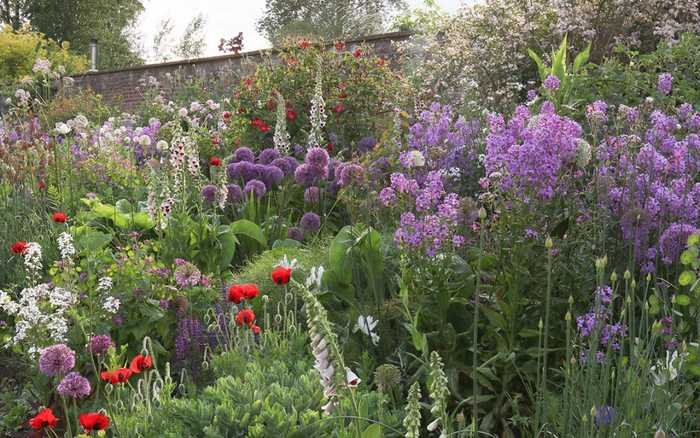Tips For Planting Spring Bulbs

October and the mind is already racing. Beyond the clocks going back and the darker side of the year and head long into the first flush of Spring, when new beginnings will cast off the mantle of a Winter scape. A tapestry of bulbs to burst onto the scene after the slow reintroduction of colour bit-by-bit. To come after the snowdrops and after the crocus – a tipping point in the year when the garden, much like Dorothy, opens its door to reveal a technicolor blaze of wonder.
Lifting And Dividing Clumps Of Perennials
Rewind to November when much of the landscape of Oz begins to take shape; crafted with the heel of a spade to lift and divide the perennials and with a help of a trowel to add a pop of colour in the form of clusters of bulbs to the mix. Early Spring is another opportunity to divvy things up, but it all depends when you can get into the borders without making too much of a mess.
The trick with lifting and dividing is choosing the time to do it, as there’s little use in splitting up a clump and having no where for them to go. You can lift a plant, put it in a crate and cover it with a hessian sheet and left in a shady corner it would weather a Winter, but head gardener Joshua Sparkes is more of a mind to do it now when you can use the bones of the Summer garden as a guide for where to plant.
Don’t Cut Back Too Soon
With a mind to sustainability, the focus is on perennialising the borders. So, instead of cutting everything down, Josh will be just taking out the bedding elements; the summer salvias and the tagetes to create the gaps in the borders into which the newly divided biennials and some tulip bulbs will go. Later in February he’ll cut back the borders, but until then will have the skeleton stems to use as a guide or marker, and with seed heads and grasses for structure over Winter and a feast for everything we share the garden with.
Some of our aster clumps are a metre or so wide, so Josh will begin by cutting back a clump so it’s 8 – 10 inches tall before lifting and dividing it with the help of a spade into smaller football size clumps. Lifting a perennial and splitting it into smaller clumps is an easy way to bulk up plants and borders and asters respond very well to it.
Shaping A Design
These will then be replanted in the border with more of an instinctive feel for groupings than any formulaic shape or pattern, much like decorating the Christmas tree and dotting the baubles by eye. As a rule of thumb, or foot (a size 10 in Josh’s case) the perennials are planted the length of one of Josh’s feet apart, ensuring there are no holes or gaps in the middle.
By now, the biennials have been sown, pricked out and planted as plugs and will be ready to be lifted into place sometime next month, a palette of hesperis, lunaria, woad, foxgloves, salvias, verbascums, lupins and myosotis to chime with the emerging flush of foliage and scatterings of bulbs next Spring.
When skies are blue, somewhere over the rainbow….
Posted on October 18th 2019

